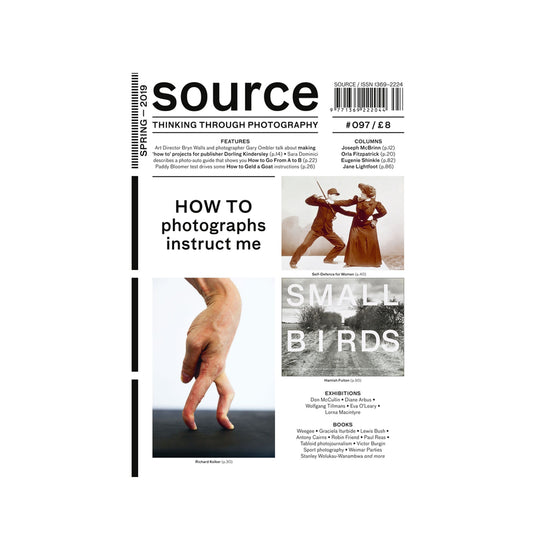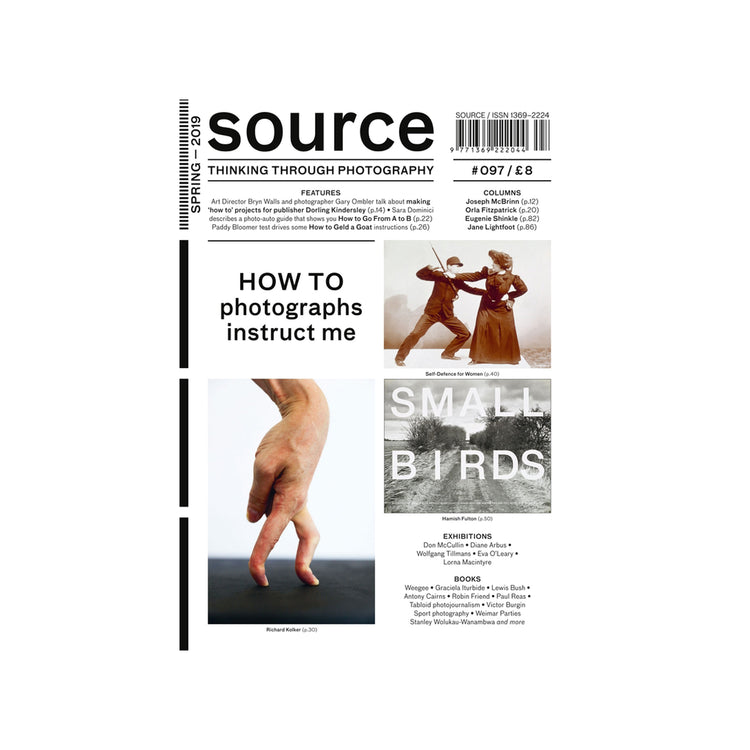Issue 97 — Spring 2019
View Contents ▸
The relationship between us, the viewers of photographs, and them, the people in photographs, is a source of constant anguish, in particular about the one-way relationship between the person looking and the person being looked at. But there are genres in which that role is reversed, in which the pictures are dictating the terms, like the 'how to' photograph. The subjects of the pictures may not be looking towards the camera but their actions are discretely presented to the viewer to instruct them. They show the decisive moment or moments at which the technique they illustrate is being enacted. Typically, 'how to' photographs are in step by step sequences so all of the stages of the action can be understood as it progresses.
If they are successful the viewer will be able to look at the pictures and then tie a knot, or wire a plug, or bandage a wound themselves. A photograph that aims to show you how to help someone having a heart attack should not be in any way ambiguous. As the art director Bryn Walls and the photographer Gary Ombler explain, achieving a picture like this can be a laborious and painstaking process. The approach used may vary depending on whether the subject is DIY or First Aid or training a dog.
In early 20th century north America there were no road signs and so a new form of publication arose, the photo-auto guide, to show travellers how to get from A to B. As Sara Dominici describes, these picture books appear to fulfill the needs of a new class, the motorist, but also simultaneously encode a new relationship to the environment, the consequences of which we are becoming more aware of a hundred years later. The best test of instructions are to try them out, so we have asked the artist Paddy Bloomer if sequences of photographs are useful for making things or if they have been superseded by online video. He considers his experiences with goats and gearboxes and finds he still has some use for pictures.
In the early years of photography the pioneers of the medium had to imagine what would be a fit subject for these new types of image. Richard Kolker has been asking the same question of today's digitally generated pictures and using the early history of photography as his guide. Fox Talbot photographed a statue of Patroclus repeatedly. Patroclus was a Greek hero of the Trojan wars who was killed during the siege of Troy. Kolker has also pictured a statue of Patroclus but, unlike Talbot's portrait bust, one depicting the moment of his death. The image is entitled The Death of Fox Talbot and shows two digital images of increasing resolution.
'How to' photographs may appear objective but they also register the changes in society around them. For the archive section we researched instructional photographs in the Getty Images collection and found a hundred years of pictures demonstrating self defence for women. As Joanna Bourke describes, while many of the techniques may appear similar there is a world of difference between judo on an Edwardian lawn and warding off attackers with a fist of keys. Hamish Fulton calls himself a 'walking artist'. As with 'how to' photographs his text and image combinations give a description of an action, a walk, but are not a substitute for the experience itself. They are a potent stimulus to the imagination but also a call to action.
— The Editors





